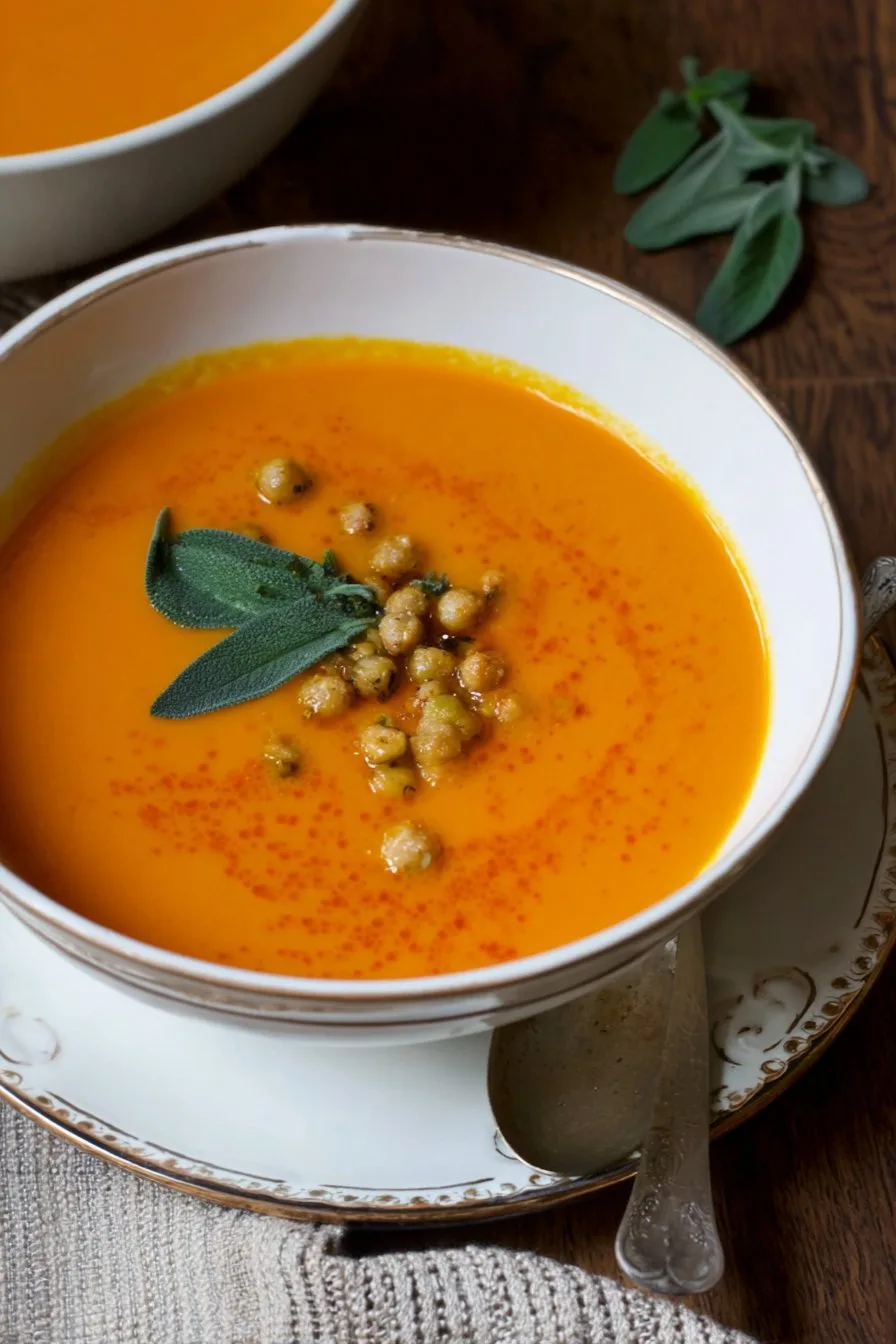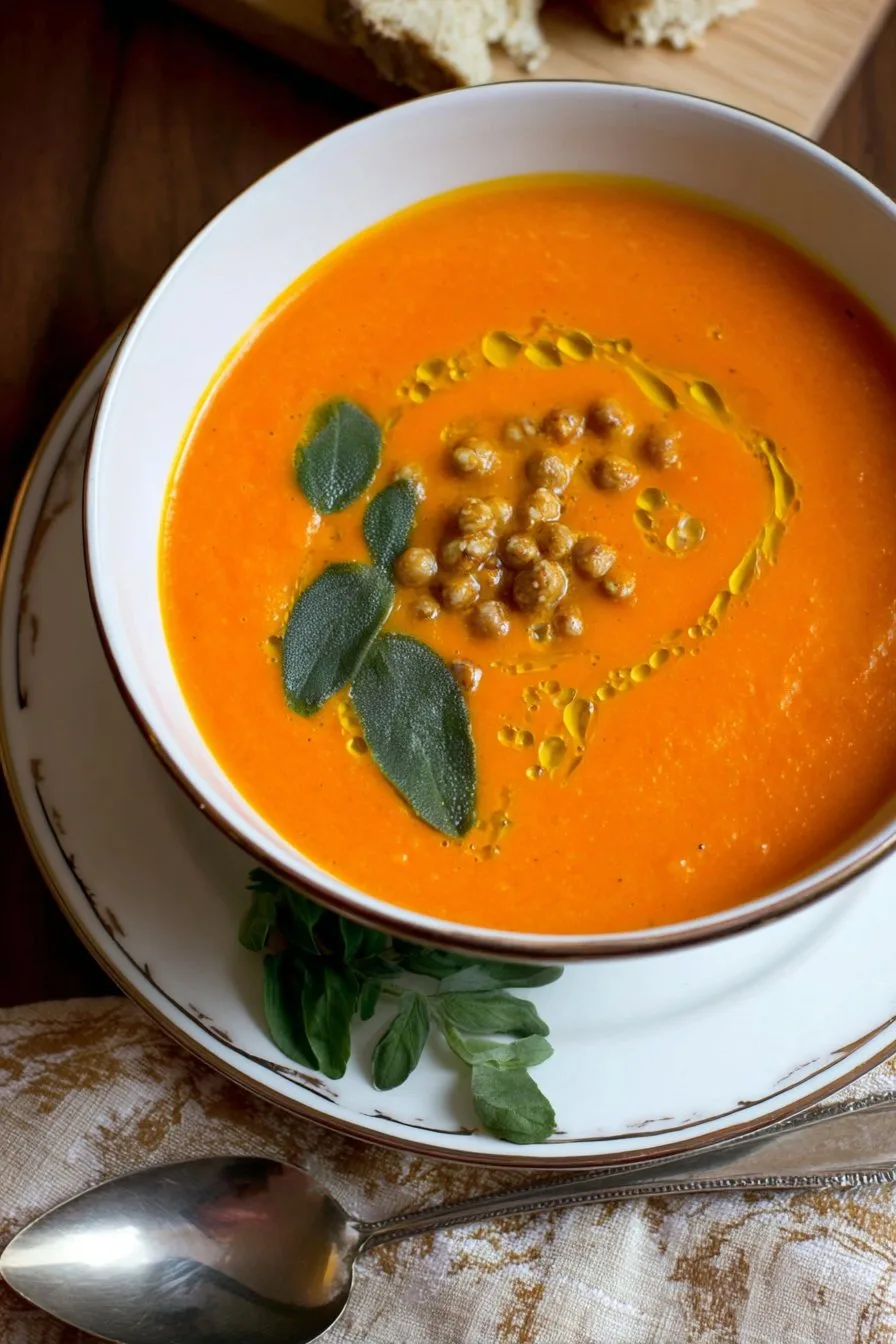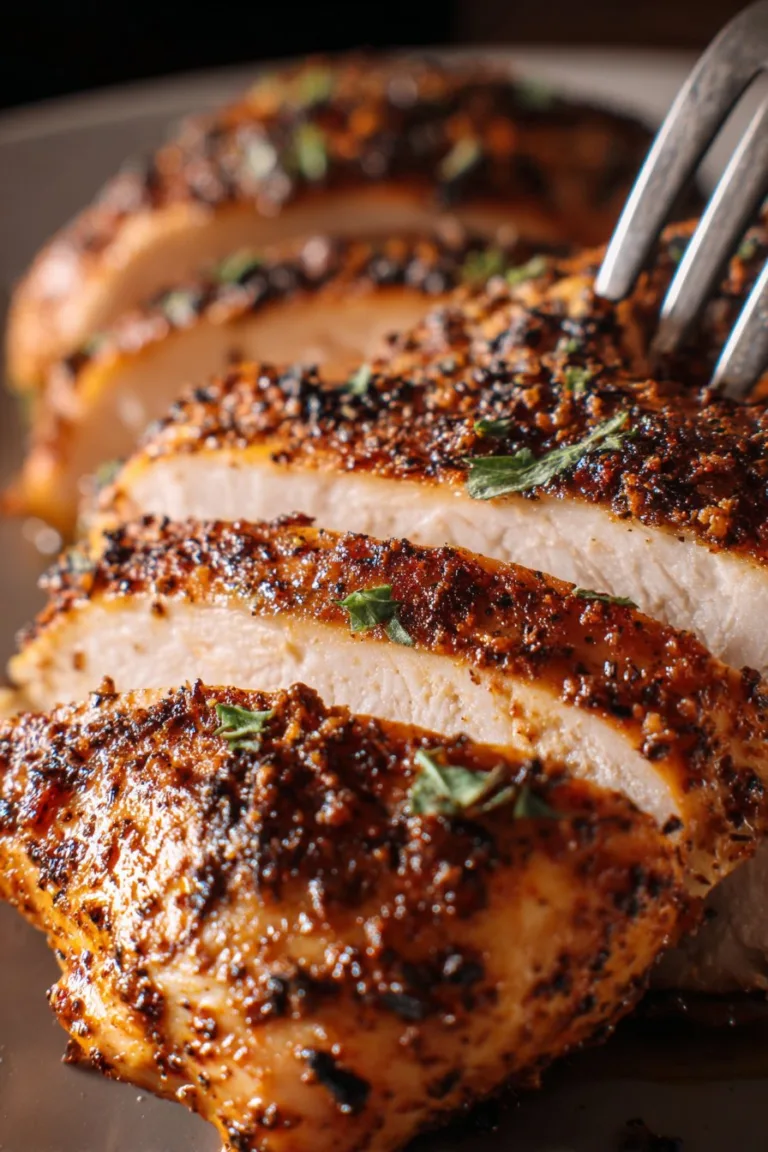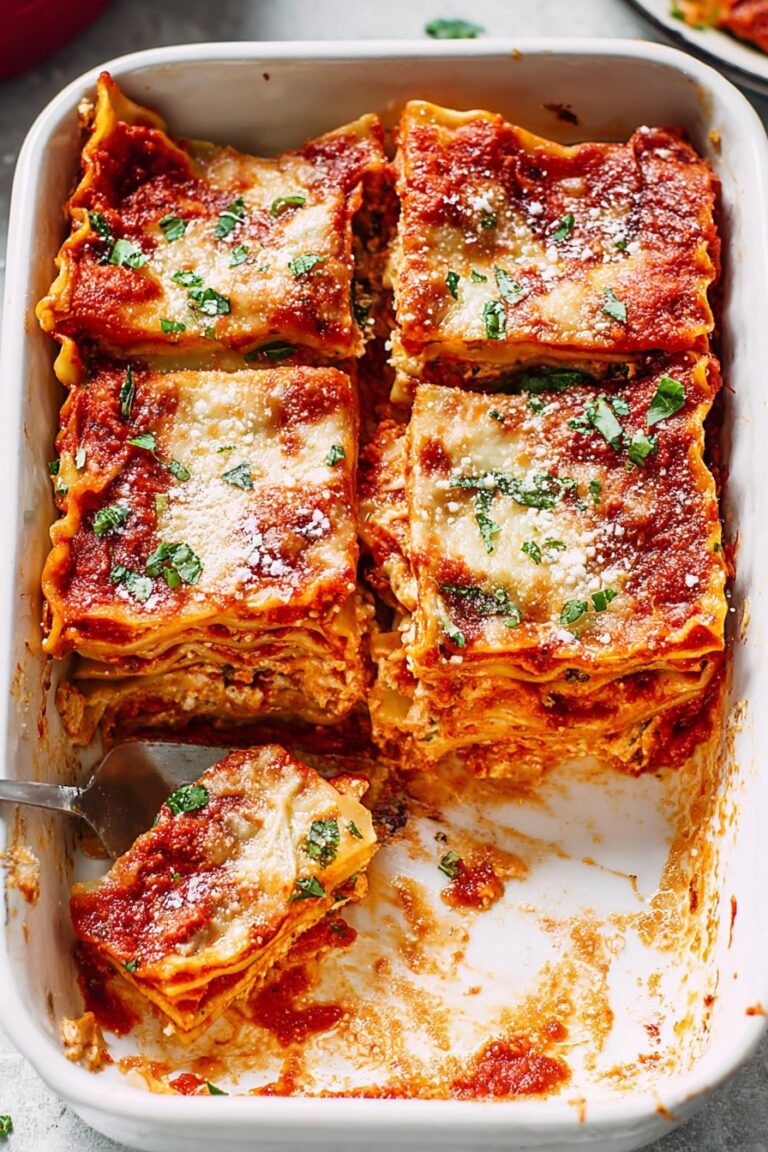If we were neighbors, I’d probably show up with a warm jar of this Butternut Squash Ginger Carrot Soup on your doorstep and say something like, just trust me, you need this tonight. It’s silky and bright and a little zingy from the fresh ginger, and on a damp Tuesday it feels like a hug you can eat. The first time I made it, I accidentally doubled the ginger and my brother said, whoa, spicy sunshine. Honestly, that became the vibe. Also, true story, I once peeled the squash while listening to a mystery podcast and forgot to hit simmer for ten minutes, which explains why the carrots were stubborn that time. We still ate it. We’re fine.
Why you’ll probably love this
I make this when the weather can’t decide what it’s doing and I want dinner that’s both cozy and fresh. My family goes a bit bonkers for it because it tastes creamy without using cream, and the ginger wakes up your taste buds in the nicest way. If I’ve had one of those days, I add extra ginger and a squeeze of citrus at the end. If I’m cooking for kiddos, I keep it mellow and swirl in yogurt to cool things off. And when I’m low on time, I roast the squash earlier in the day; I used to think that was fussy, now I think it’s smart.
Ingredients, with the swaps I actually use
- 1 medium butternut squash, about 1.2 kg, peeled and cubed. I sometimes buy pre cut squash when I’m in a hurry, no shame.
- 4 medium carrots, sliced into coins, around 300 g.
- 1 yellow onion, chopped. A couple shallots also work fine if that’s what you have.
- 3 cloves garlic, smashed. My grandmother always insisted on the big purple garlic, but honestly any version works fine.
- A thumb sized piece of fresh ginger, peeled and grated, about 2 to 3 tablespoons. If you only have ground ginger, start with 1 teaspoon and see how you feel.
- 2 tablespoons olive oil or butter. Coconut oil works too if you want a slightly tropical note.
- 4 cups vegetable stock, plus a splash more to thin. I sometimes use chicken stock when that’s handy.
- 1 small apple, peeled and diced, optional, for gentle sweetness. A pear works too.
- Salt and pepper, to taste.
- Pinch of chili flakes or a small pinch of cayenne if you like a whisper of heat.
- To finish: a squeeze of lemon or lime, a swirl of yogurt or coconut milk, and a handful of chopped herbs like parsley or chives.
Quick side note on peeling the squash. If you want a visual refresher, this guide to peeling butternut squash is genuinely helpful, and I’ve used it more than once when my brain felt like mashed potatoes: The Kitchn tutorial.
How I actually cook it, step by step
- Warm a large pot over medium heat and add the olive oil. Toss in the onion with a pinch of salt and cook until it looks glossy and smells sweet, about 5 to 7 minutes. If it browns a bit, no worries, that’s flavor.
- Add the garlic and ginger. Stir for about 60 seconds until you can smell both but they’re not catching. This is where I usually sneak a taste of the ginger and think, yep, that’s lively.
- Tip in the carrots and squash. Stir to coat with the onion ginger goodness. Cook for 4 to 5 minutes just to wake everything up.
- Pour in the stock and add the diced apple if using. Bring to a gentle boil, then drop to a simmer. Cover loosely and cook 20 to 25 minutes, until the squash and carrots are soft enough to squish against the side of the pot with a spoon. Don’t worry if it looks a bit weird at this stage, it always does.
- Blend until smooth. An immersion blender is ideal because it means fewer dishes. If using a regular blender, do it in batches and vent the lid a touch so steam can escape. Serious Eats has a great reminder about blending hot soups safely if you want extra peace of mind: how to puree hot soup.
- Return to the pot if you used a countertop blender. Thin with a splash more stock or water if it’s thicker than you like. Season with salt and pepper, then stir in a squeeze of lemon or lime. Taste. Actually, I find it works better if you add the citrus in small splashes and taste as you go.
- Serve with a swirl of yogurt or coconut milk and a scatter of herbs. If you want a bit of heat, dust with chili flakes. If you want cozy, add a drizzle of good olive oil. If you want both, go wild, mate.
Little notes form my kitchen
- Ginger intensity creeps up as the soup sits; if you’re ginger shy, start smaller and build.
- I think this tastes better the next day, oddly, as if the flavors shook hands overnight.
- If your soup feels flat, it probably needs salt or a bright splash of lemon. Or both.
- A tiny bit of apple does wonders for balance without making it taste like dessert.
Variations I tried so you do not have to
- Thai leaning: Add a spoon of red curry paste and finish with coconut milk and lime. It’s lovely with fresh cilantro.
- Roasted route: Roast the squash and carrots at 220 C with a little oil until caramelized, then simmer briefly with stock and blend. Deeper flavor, slightly more faff, worth it on weekends.
- Smoky moment: A pinch of smoked paprika and a splash of maple syrup. Sounds odd, tastes like October.
- The one that didn’t quite work: I tried stirring in peanut butter. I wanted satay vibes but it got claggy and bossy. I’d skip that.
Equipment I use, plus workarounds
I call my immersion blender essential because it means I don’t juggle hot liquid near the countertop blender. That said, if you don’t have one, a regular blender works fine. And if you have neither, you can mash by hand with a sturdy potato masher, then whisk like you mean it. It won’t be perfectly silky but it’ll be rustic and charming. For peeling, a sharp Y peeler is nice, though a paring knife and patience do the job. If the squash skin is being stubborn, microwave the whole squash for two minutes to soften it a bit, then try again. Bon Appetit has a neat tip on freezing ginger that I use all the time: freeze and grate from frozen.

Storage and make ahead
Cool the soup, then store in airtight containers in the fridge for up to four days. It also freezes beautifully for about two months. Reheat gently over medium low heat; splash in water or stock if it thickens. Though honestly, in my house it never lasts more than a day.
Serving it up at home
We like this with crunchy toast rubbed with garlic, or a simple grilled cheese when we’re feeling cozy. On second thought, a side salad with lemony dressing is nice if you want contrast. Family tradition here is to top bowls with a tiny pile of microgreens because it makes us feel fancy even on a weekday. A cuppa on the side if it’s lunch, or a crisp cider if it’s dinner, both are grand.
Pro tips I learned the hard way
- I once tried rushing the onion step and regretted it because the soup tasted sharp instead of sweet. Give the onions time to soften.
- I cranked the heat to make it boil faster and scorched the bottom. Low and steady wins, otherwise you chase burnt bits the whole time.
- Forgot the citrus at the end, and everything felt muddy. A little acidity is the light switch.
- Blended a full blender with the lid clamped tight, and yep, soup geyser. Vent the lid and cover with a towel for safety.
FAQ, because you asked and I’m listening
Can I make this vegan
Absolutely. Use olive oil and swirl in coconut milk or oat cream at the end if you want extra richness. It’s naturally dairy free otherwise.
Can I swap the butternut squash
Yes, kabocha or honey nut squash are both lovely. Even sweet potato works in a pinch, though it changes the flavor a bit.
How spicy is it
It’s more zingy than fiery. The heat comes mostly from fresh ginger. Add chili flakes if you want a kick, or skip them if not your thing.
Do I need to peel the carrots
Not really. If you scrub them well, leave the peel on for extra flavor. I peel them when they look sad or rough.
Can I use a blender bottle to puree
I wouldn’t. Hot liquid in a sealed shaker is a chaos magnet. Use an immersion blender, a regular blender in batches, or mash and whisk for a chunky style.
What if my soup is too thick
Thin it with hot stock or water a splash at a time. Taste for salt after thinning since it can drift.
Why is my soup a bit bland
Usually salt, sometimes acid. Add a little salt, taste, then a squeeze of lemon. If that still feels flat, a tiny pinch of sugar can bring the squash and carrot forward.
Can I make this in a slow cooker
Sure can. Add everything except the lemon and dairy, cook on low for six to seven hours until tender, then blend and finish with citrus and your chosen swirl.
And a tiny digression before you go. I swear chopping onions is easier if you put on a favorite song and hum along. Mine is currently a wildly uncool nineties track and I will not be taking questions. Carry on and enjoy your Butternut Squash Ginger Carrot Soup.
Ingredients
- 2 tablespoons olive oil
- 1 medium yellow onion, chopped
- 2 cloves garlic, minced
- 1 tablespoon fresh ginger, grated
- 1 medium butternut squash (about 2–3 lb), peeled, seeded and cubed
- 3 large carrots, peeled and chopped
- 4 cups vegetable broth
- 1/2 cup full-fat coconut milk (or cream), plus salt and freshly ground black pepper to taste
Instructions
-
1Heat olive oil in a large pot over medium heat. Add the chopped onion and cook until translucent, about 5–6 minutes.
-
2Add the minced garlic and grated ginger and cook, stirring, for 1–2 minutes until fragrant.
-
3Add the cubed butternut squash and chopped carrots to the pot, pour in the vegetable broth, bring to a boil, then reduce heat and simmer until vegetables are very tender, about 20–25 minutes.
-
4Using an immersion blender (or in batches in a countertop blender), puree the soup until smooth and creamy.
-
5Stir in the coconut milk, season with salt and freshly ground black pepper to taste, warm through for a few minutes, then serve garnished with a drizzle of coconut milk or a sprinkle of toasted pumpkin seeds if desired.
Approximate Information for One Serving
Nutrition Disclaimers
Number of total servings shown is approximate. Actual number of servings will depend on your preferred portion sizes.
Nutritional values shown are general guidelines and reflect information for 1 serving using the ingredients listed, not including any optional ingredients. Actual macros may vary slightly depending on specific brands and types of ingredients used.
To determine the weight of one serving, prepare the recipe as instructed. Weigh the finished recipe, then divide the weight of the finished recipe (not including the weight of the container the food is in) by the desired number of servings. Result will be the weight of one serving.
Did you make this recipe?
Please consider Pinning it!!








